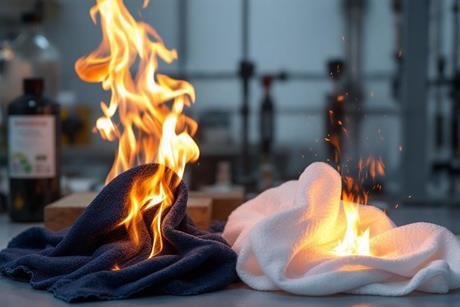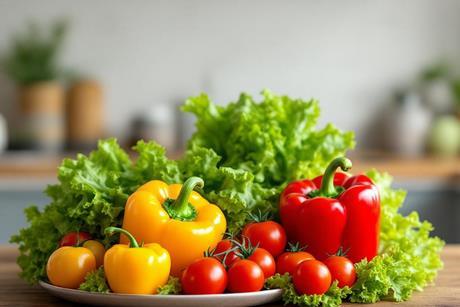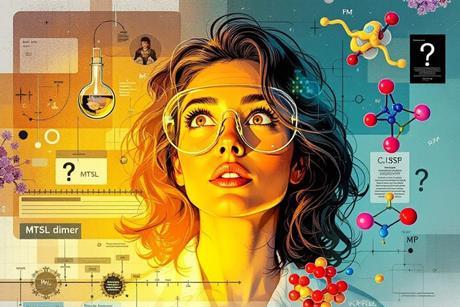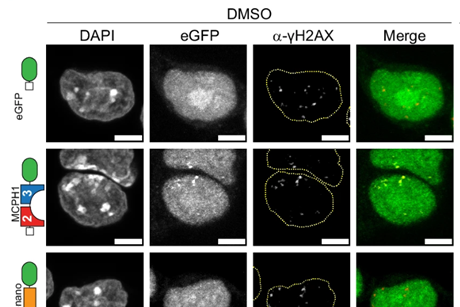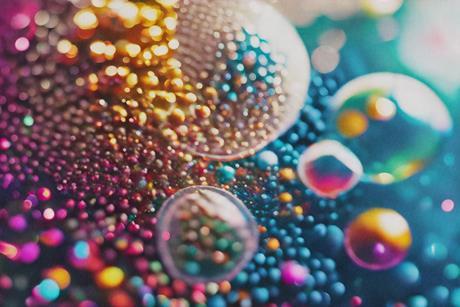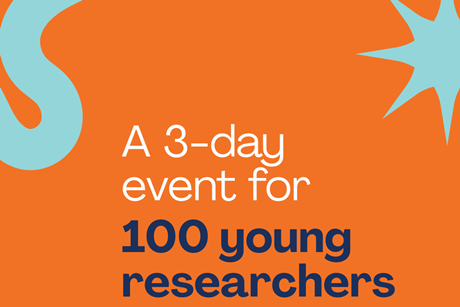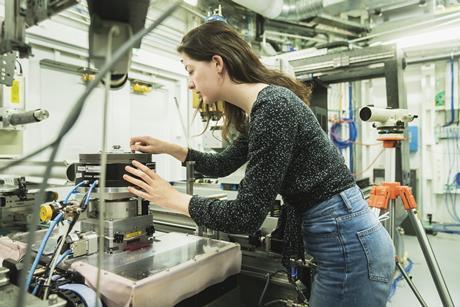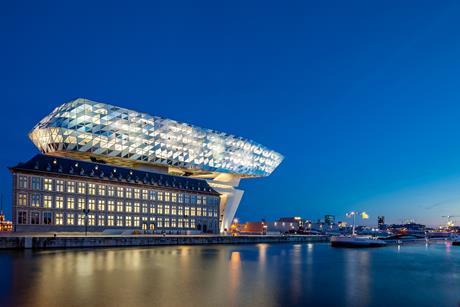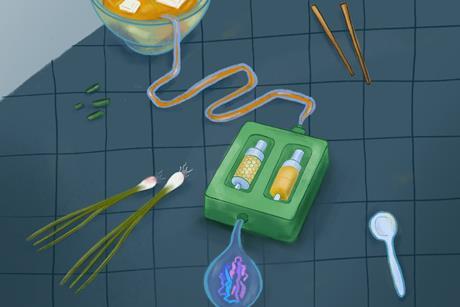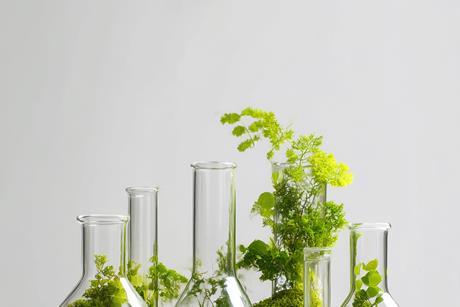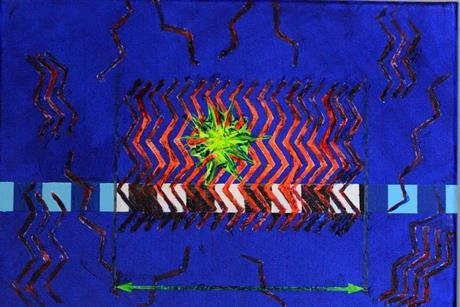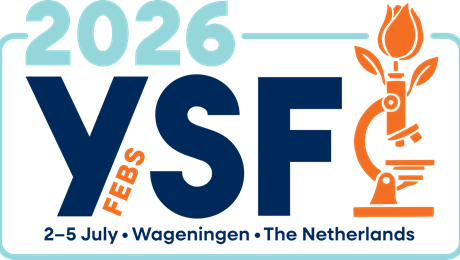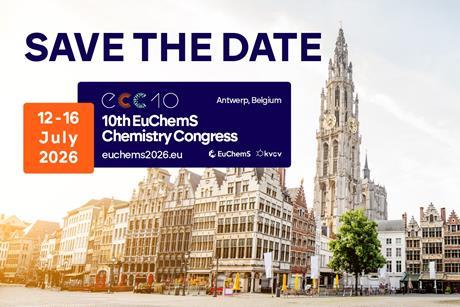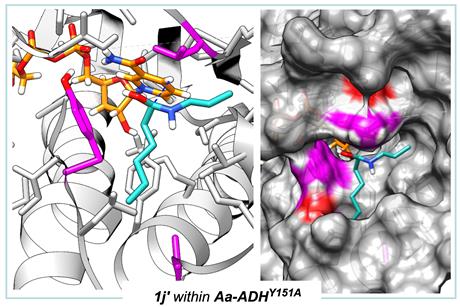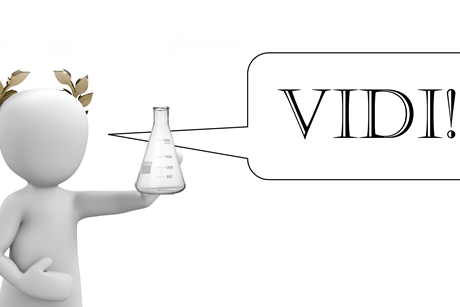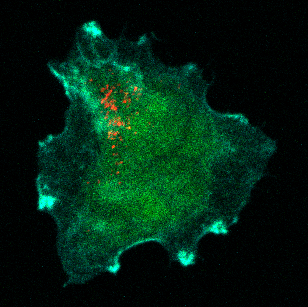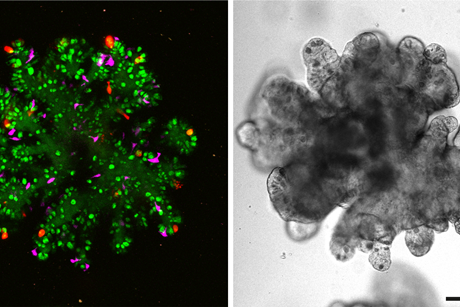News articles
From sugar to safety: a new era in flame retardants
While many current flame retardants are effective, they contain halogens such as chlorine or bromine, which are not ideal in terms of safety. In ChemCatChem, researchers from KU Leuven, Oleon and Devan present the synthesis approach of a new phosphorous, biobased flame retardant.
Hormone-free plant regeneration
Researchers at Wageningen University & Research and KeyGene have developed a method that enables plant cells to regenerate into new plants without the need for externally administered hormones. The researchers report their findings in The Plant Cell.
Mysterious dimer unravelled
For decades, researchers labelling cysteines with methanethiosulfonate groups have observed the formation of a mysterious dimer. Martina Huber set to work with a team from Leiden to unravel the hitherto unknown structure. The answer to the puzzle can be found in ChemistryOpen.
Sensor visualises DNA damage without interference
Biochemists at Utrecht University have developed a fluorescent sensor that makes DNA damage and repair visible in living cells and animals for the first time. In an article published in Nature Communications, the researchers demonstrate how the sensor binds to damaged DNA without interfering with the repair process.
Dutch researchers receive M grants for innovative research projects
Research that is both innovative and fundamental, and which is of a high quality and/or scientific urgency. This is the goal of the 21 successfully funded projects. Some of the projects also involve members of our associations.
YSF2026: Meet the speakers
The Young Scientist Forum (YSF2026) offers a combination of scientific presentations and career talks covering all those other topics that are crucial to researchers. We can already introduce the speakers. Not yet registered? Don’t wait too long, the deadline is 10 December 2025.
Environmentally Friendly Additives in Cement and Plasterboard
Additives in cement and plaster ensure strong, water-resistant materials, but they are often expensive and harmful to the environment. PhD candidate Annet Baken discovered how such substances influence the nanoscale crystal formation of building minerals, thereby slowing down the hardening process.
‘Cross-cutting conferences are a great way to broaden your horizon’
Looking ahead to ECC10 in Antwerp, C2W International had a quick chat with plenary speaker Kim Jelfs, professor of Computational Materials Chemistry at Imperial College London.
A thousand times better with microfluidic protein identification platform
Structural biologists from Vrije Universiteit Brussel have presented a new microfluidic platform called MISO to Nature Methods. This reduces the necessary protein purification by up to a factor of one thousand.
New Bachelor’s degree in Green Chemistry in Emmen
NHL Stenden University of Applied Sciences has launched a new Bachelor’s degree in Green Chemistry to train eco-conscious chemists.
Measuring dementia threads with peptide dyes
In PNAS, biochemists from Utrecht University and their international colleagues present a new measurement method called FibrilPaint, which makes the growth of harmful protein clumps in the brain visible.
Super antibiotic EVG7 keeps beneficial bacteria intact
It’s been just over a year since C2W | Mens & Molecule first wrote about the super antibiotic EVG7. Now, the Leiden team has returned, showing that EVG7 selectively targets the harmful bacterium Clostridioides difficile without significantly affecting beneficial gut bacteria in a mouse model.
Registration is now open: FEBS Young Scientist Forum 2026
Maastricht will be the place to be for the international biochemistry and molecular biology community from 4 to 8 July 2026, when it will host the 50th FEBS Congress. Although this may seem a long way off, there is every reason to take action now. Registration is now open for the FEBS Young Scientists Forum, which will take place from 2 to 4 July 2026.
ECC10 in Antwerp: Looking ahead
The EuChemS Chemistry Congress (ECC10) will take place in Antwerp in 2026! Over the coming months, we will be exploring the reasons why you shouldn’t miss Europe’s largest chemistry congress.
Easy enzymatic synthesis of amides
Amide synthesis has become much simpler with a new biocatalytic approach developed by researchers from Amsterdam. Their work was designated as a Very Important Paper in Angewandte Chemie.
Barcode-free platform for drug discovery
A new platform called self-encoded libraries has made the process of looking for drug candidates much simpler. This hit discovery method does not require large biomolecular tags, Leiden researchers show in Nature Comunications. ‘We believe this might democratise early drug discovery.’
Cell tracking algorithm keeps an eye on AI
Tracking cells in three-dimensional cell models such as organoids often requires lengthy manual review work. However, biophysicists at the AMOLF physics research institute have now developed a new algorithm published in Nature Methods that can track cells more efficiently and automatically identify any errors.
Vidi 2024: from stress resistant roots to adapting inks
Funding has been awarded to the Vidi projects of eight members of the NVBMB and the KNCV. With a maximum of €850,000 each, the researchers can develop their own innovative line of research and set up their own research group.
Lipids control lethal launch
Our immune system deploys specialized ‘killers’ to tackle viruses or tumor cells. As it turns out, the cellular lipid metabolism plays a key role in controlling these lethal, but essential tasks.
Organoids are now vegan, too!
This summer, we wrote about the polyisocyanide hydrogel protocol. Now, a team from Utrecht and Nijmegen has reported in PNAS that this gel has been used for the first time to grow 3D organoids in a completely animal-free environment.


